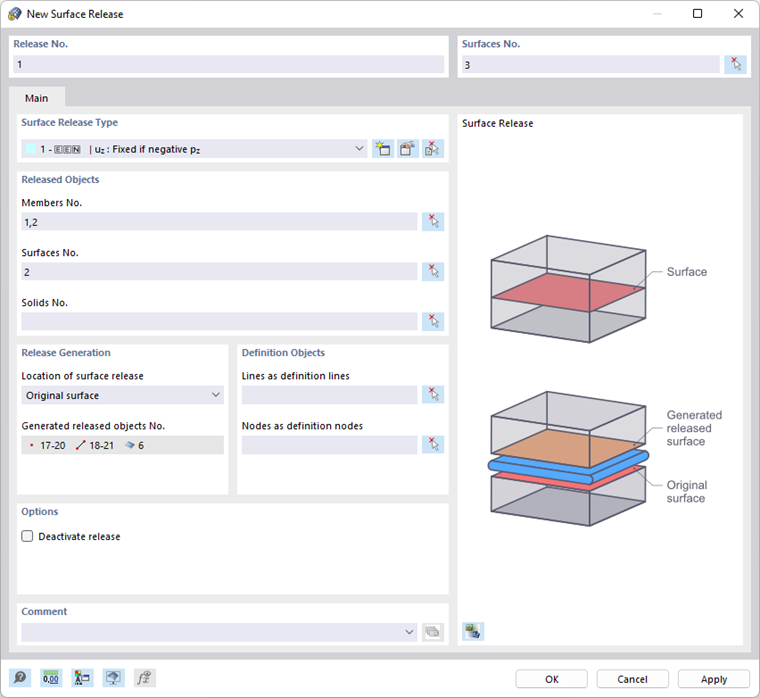A surface release allows you to decouple the model on a surface. You can use it to model, for example, solids being connected in an unbraced manner or transferring only compressive forces on the contact surface. The displacements are controlled by the "Surface Release Type" that describes the properties of the hinge.
Surface Release Type
The properties of the release are described by a hinge. Select the release type in the list, or define a new type using the
![]() button. The corresponding dialog box is described in the chapter Surface Release Types.
button. The corresponding dialog box is described in the chapter Surface Release Types.
Released Objects
Specify the numbers of the members, surfaces, and solids that are decoupled at the surface. You can use the
![]() button to define the objects graphically in the work window.
button to define the objects graphically in the work window.
Release Generation
RFEM creates a copy of the surface at the locations allowing the released displacements. In the list, select whether to place the release (hinge) on the "Original surface" or the "Released surface". The setting specifies with which part of the model the hinge is shifting, thus having an effect on the results.
When you have defined a surface, the number of the generated surface including node and line numbers is shown. In the navigator, it is marked with the added "Surface Release" labeling. It cannot be edited.
Definition Objects
The released surface is automatically created as a copy with corresponding lines and nodes. However, if you want to use one or more already existing lines or nodes for the generated surface, you can specify the corresponding numbers in this dialog section.
Options
The "Deactivate release" check box allows you to cancel the decoupling on the surface for certain analyses without deleting the surface release itself.
Example
For a funnel-shaped component, the cap should only act under compression forces. Here, it is necessary to define a surface release type with the "Fixed if positive pz" effect. Then, use this type for the surface releases for the boundary surfaces of the inner solid ("plug").

.png?mw=760&hash=07f04b2ebecf5b4e706fdfd2dcccdcb0e317a32e)